A Day at Sea on a Lamu Dhow
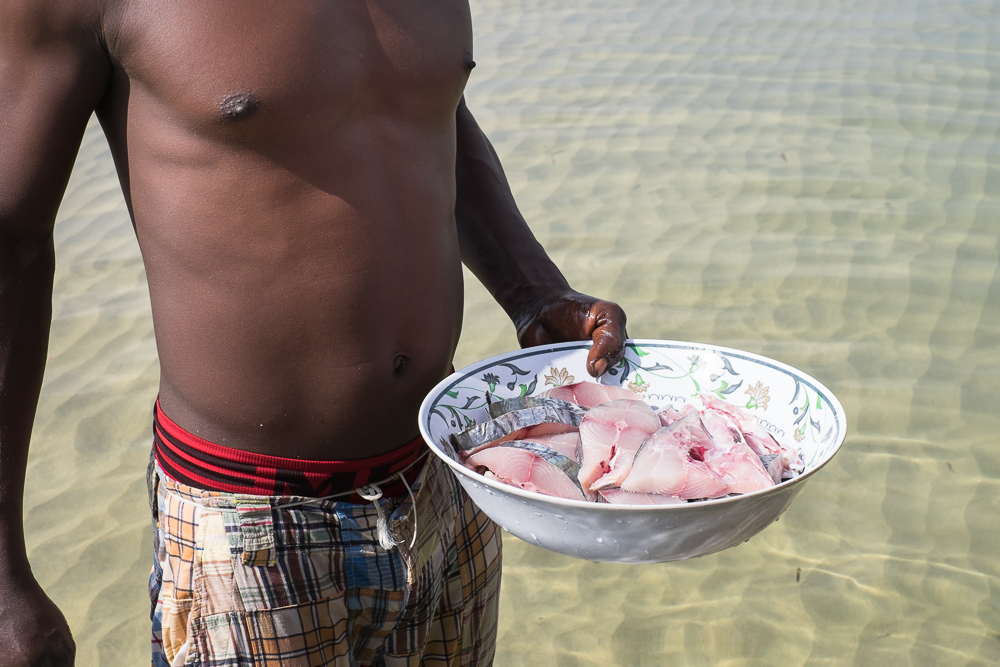
The sea is still quiet in the morning; slowly waking up from its busy night of dreaming among the waves and the pull of the moon. We walk to the beach from Mkoko House, our eyes heavy with sleep, our moods picking up the pace; excited for our day on water.
The dhow is hovering by the shore, invisibly moored to the bottom; its majestic sail wrapped up tight around its mast. We greet the captain and co-captains as one of them jumps into the water with a bowl and a freshly caught Snapper from the fisherman across the channel. In the rising sunlight, we can see all the way to his toes as tiny fish scales are scrapped off with his knife and released into the saltwater, reflecting the sun rays back up at us. Perfectly formed fillets pile up in the weightless bowl with blue flowers, an improvised floating kitchen. They will be marinated in saffron and salt as we sail to our destination.
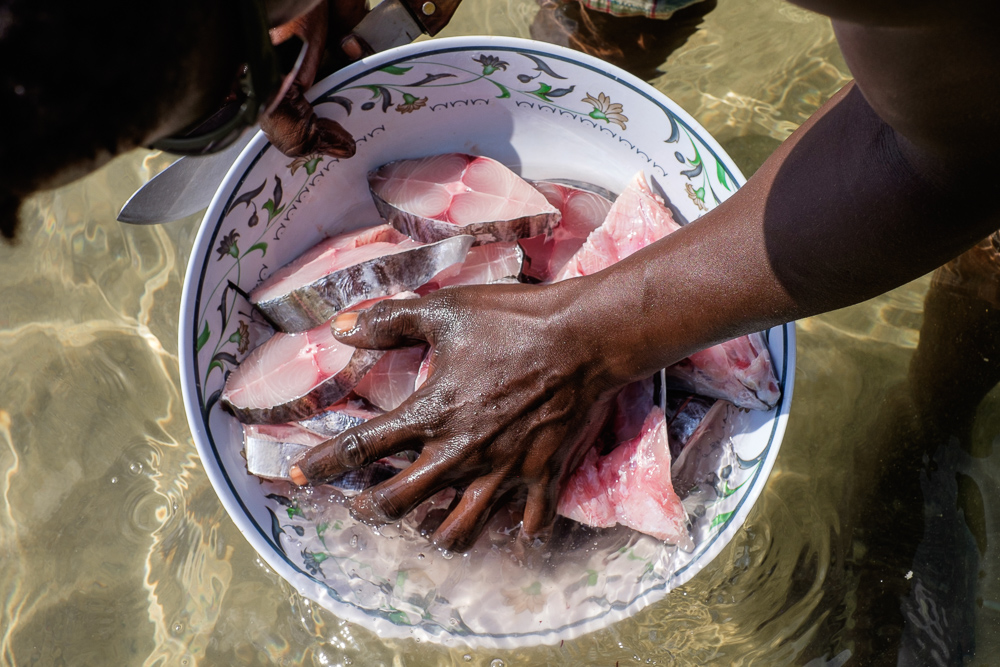
There is no wind yet, so we slice our way across the channel with the low rumble of the motor behind us, cutting a fine line through the water. The surface looks like frosted glass, with a glossy coat and ripples below. The ocean currents are still swirling.
Shela village does its usual parade, white Swahili architecture dotted among tall palm trees and opulent bougainvillea. It is more resplendent than ever in the early morning glow.

We settle ourselves into the wide belly of the wooden dhow, everyone choosing their spot according to their needs: a nap, a book or a chat. A close relative of the Mozambican dhows, historians are divided as to whether the dhow was invented by the Indians or the Arabs, but these traditional trading vessels have been roaming the Indian Ocean and the Swahili coast for centuries.
As we continue down the Lamu Channel we pass Lamu Old Town, its streets already charged with action. Its pier loading and off-loading people, petrol and food. Donkeys laden with sacks of grain make their way between queues to top up Safaricom simcards and the cries of samosa sellers. Beyond Lamu Old Town, we enter a narrow mangrove channel near Mkanda, usually impassable at low tide. The rocks and green sea bushes are almost within our reach, flanking us on both sides.
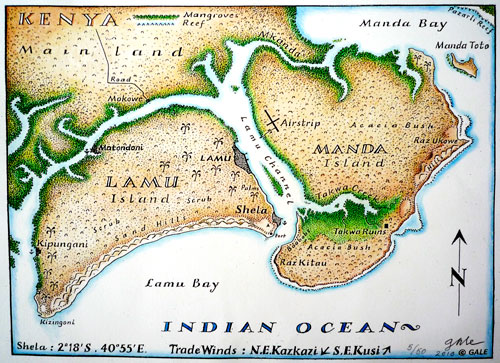
Once we round the channel and the water opens up towards Manda Bay , the breeze picks up and in one swift move, the captain unfurls our sails like a flock of birds being released into the wild. The dhow jerks forward, caught up by the power of the wind. We can no longer hear the grunt of the motor, but only the roll of waves and the dhow’s bottom flopping against them.
We jump into the water at Manda Toto with our snorkelling gear, to see puffers, clown fish, the remaining coral and if we are lucky a turtle. Meaning Little Manda or Baby Manda, the whole channel and bay are being threatened by the double hazard of plans to build the biggest port in East Africa as well as a new coal plant, which Lamu does not need. The people of the Save Lamu project are fighting hard to stop this idyllic corner from being destroyed, but need help. If you are interested, do check out their battle.

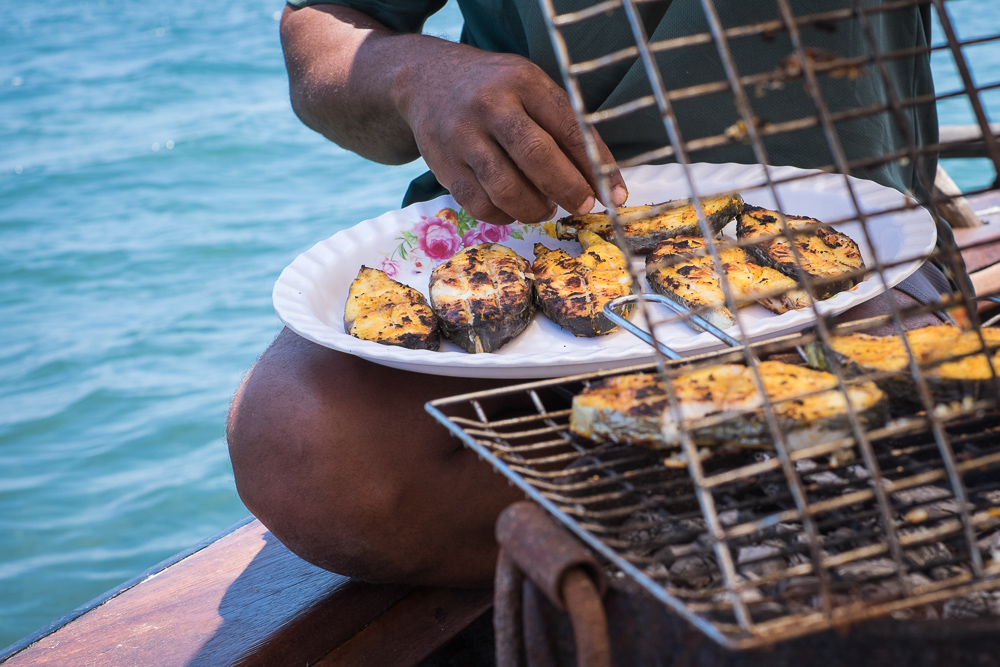
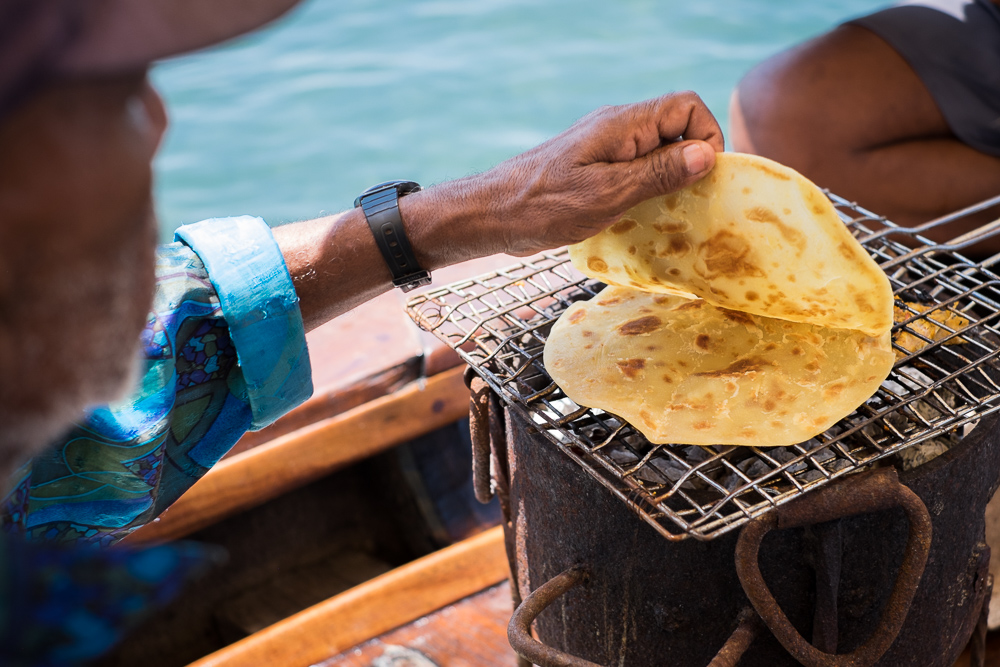
Having worked up an appetite it was time for lunch and that glorious fish. While we swam, the captain-slash-chef had set up a portable grill and began grilling the saffron Snapper, handmade-chapattis and mixing up a fresh salad. With salt still on our fingers, we dug in with our hands, wrapping up chunks of fish and salad in the warm chapati, the dressing dripping onto our laps. Everything seems to taste better when eaten with hands, especially in the iodine gust of the Indian Ocean.
To work off our lunch, we swam again at Manda Bay, though that’s a bit of a lie, we kind of just soaked in the shallows. For dessert, there were slices of fresh mango, pineapple and watermelon. The sweet juices burst into the brine of the sea, bringing new flavours to the vibrant colours of the fruits.
Suddenly it was time to sail back, our day disappearing into a long slow exhale. Through the mangroves and the narrow channels we bobbed back along the rising waves. And as the palm trees of Shela swayed in salute to us, we were back home. But we hadn’t gone too far, just into another corner of paradise.







8 Comments
Marcus
April 10, 2017I am now hungry… and in need of a holiday.
Thanks! 😀
Nico & Gabi
April 12, 2017You know you are always invited!
Tammy
April 11, 2017Can we please do this next year! Sounds wonderful!
Nico & Gabi
April 12, 2017Definitely!
Roy
April 11, 2017Reading this has just taken me back to slightly over ten years, when the dhow Ronaldo carried us along the very same route. We dropped anchor for a while just off Pate, fishing with hand lines for red snapper and grouper, then made for Manda Toto where we filleted our catch and washed it with lemon juice, grilled the fillets over over a small fire, and wolfed it all down with a simple salad. It really was the most delightful day. Does fish taste better in Paradise? Oh yes!
Nico & Gabi
April 12, 2017It does taste better, doesn’t it? ;p
Chris
April 16, 2017Lamu is such a magical place! Went there last year and been dreaming about it ever since. The gorgeous villas, swaying palms, rocking dhow boats… I can’t wait to be back.
Eva
April 20, 2017I’m at work right now, but your storys are always a wonderful brake, taking me out to memories and feelings of travelling, lazy days, adventure, the ocean, summer and much more – a 10 min-travel in my mind. Thanks!!